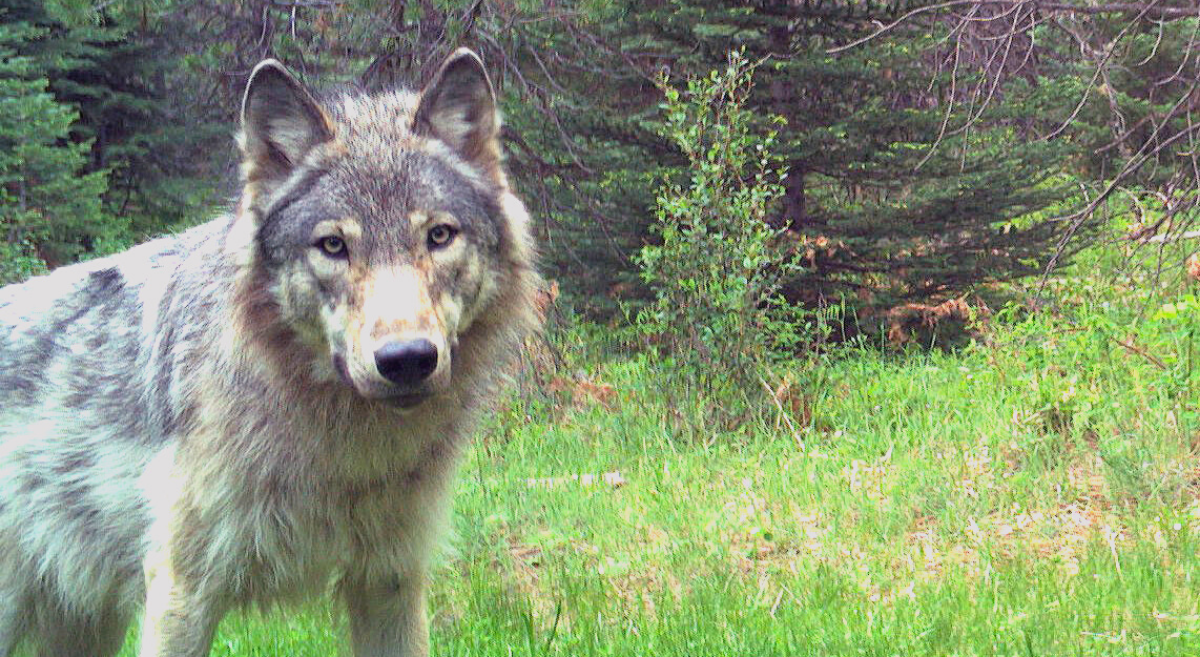
The Oregon Department of Fish and Wildlife (ODFW) released the 2021 annual wolf report this week. Unfortunately, the report shows that 2021 was not a great one for wolves.
Major takeaways from the report:
- Human-caused mortality remains the number one factor in preventing full wolf recovery in Oregon. Of the 26 wolf mortalities in 2021, 21 of them were human-caused or roughly 12% of total population. Here’s a quick breakdown of mortalities:
- Known poaching: 8
- Killed by ODFW staff in response to predation: 8
- Killed by vehicles: 4
- Died from known natural causes: 2
- Other/unconfirmed: 4
- The population only grew by only 2, bringing the total to 175 in 2021. Growth over the last several years has been rather slow, which is troubling considering that scientists estimate that Oregon could sustainably support up to 1,450 wolves across the state.The rate of population increase from last year was only 1.16%. Since wolves were removed from the state endangered species list in 2015, the average rate of population increase has been 8.05%. At the time of delisting, ODFW staff put out a Population Viability Analysis in which they considered the worst case scenario to be at 7%. That means, on average, Oregon’s population growth rate is hovering just about at ODFW’s own worst case scenario prediction.
- Wolves killed by vehicles are becoming more and more alarming to us. In 2021, 4 wolves were killed by vehicles. In 2020, that number was 1 and in 2019, 4 . One of the reasons for higher numbers in recent years likely has to do with more wolves trying to disperse out of Northeast Oregon into new territory. However, these numbers make it clear that wolves being able to do that safely, across major highways and roads, is still a major challenge. Luckily, earlier this year, the Oregon legislature passed a funding bill to support more highway structures for safe wildlife crossing.
- In the past (especially when the overall population growth was slow), ODFW has pointed to breeding pairs as the "real" determiner of recovery. Unfortunately, the number of breeding pairs has decreased for the second year in a row. The first breeding pair of wolves in Western Oregon was confirmed in 2014. 7 years later, there are only 2. The number of packs also decreased in Western Oregon to a low not seen since 2018. The decrease in breeding pairs is especially concerning given that most of the state remains uninhabited and the potential for increase is so significant.
- Year after year, Oregon Wild staff is curious about information (or lack thereof) we have on deaths of collared wolves v. uncollared wolves - and this year is no different. For example, after a quick mathematical analysis it looks like 10 of the 26 dead wolves in 2021 were collared. We also know about 3 other wolf deaths because they were traveling with collared wolves. The state currently has 30 working collars. Assuming that's a good stand-in for the average number of collars working at any time last year, that means 1 out 3 wolves with working collars died last year. So either collared wolves are being killed at a disproportionate rate OR there is potentially significant unreported wolf mortality. Either way, these numbers are shocking and underscores that in reality, we don’t know the half of it.
- One thing that’s unclear to us is that ODFW said no wolves were killed using Caught in the Act authority (which allows ranchers to kill wolves on their private property or legally leased lands if a wolf is caught in the act of biting, wounding killing, or chasing livestock or working dogs), so how do they explain this one?
“An uncollared adult male wolf from the Balloon Tree Pack was shot by a livestock producer in February on private property near livestock. OSP interviewed the landowner and determined that charges were not warranted in the case.”
For more information read our press statement here.
To read our analyses about previous years’ wolf reports, check it out here.
CAPTION: An adult male from the Middle Fork Pack caught on camera in Wallowa County, ODFW (Top). The breeding female of the new Logan Valley Pack in Grant County caught on remote camera 3/15/2021 (Left). WA90 making tracks as he immigrated to Oregon from Washington’s Grouse Flats Pack. He traveled from Wallowa County to Jackson County during spring 2021. His collar dropped off, but he still has a red eartag. This picture was taken 2/1/2021 on USFS land in Baker County (Right).

